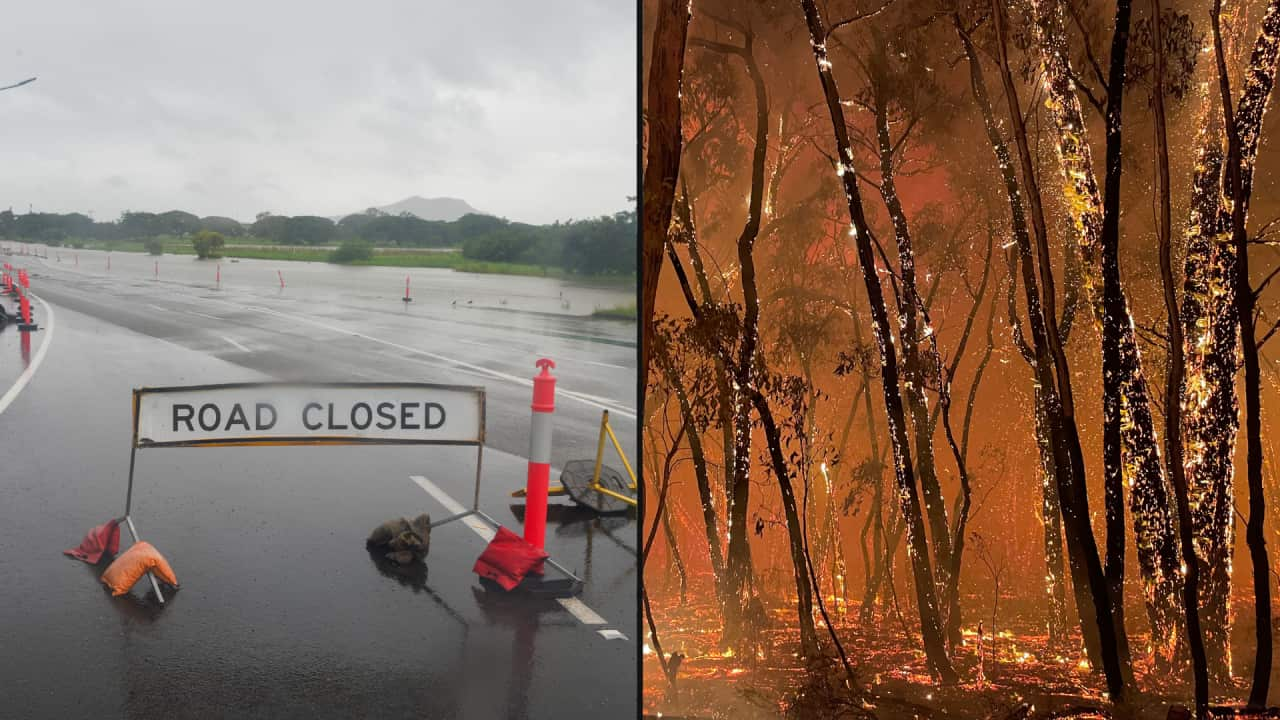Hundreds of people have fled to evacuation centres after record-breaking rain in northern Australia, with the deluge set to continue for days.
North Queensland residents between Cairns and Mackay have been warned to stay on alert for rising water levels with significant rainfall expected until at least Wednesday.
Bureau of Meteorology's Matt Collopy told reporters: "We're seeing record-breaking rainfall in many locations."
"There is more significant rain to come ... so it will take days for that water to come out of those systems."
Nearly one metre of rain was recorded at Paluma Dam, Townsville, in the last 48 hours, while Ingham has copped more than 400mm in the last day.
Floodwaters are expected to continue rising in Ingham where the river is centimetres shy of reaching the 1967 record of 15.2m which devastated the area.
Townsville's Ross River is also set to rise beyond the major flood level on Monday afternoon.
when a State Emergency Service boat helping people through floodwaters struck a tree and flipped in Ingham.
'It can change on a dime'
Flooding has cut power and damaged roads throughout the north, with a major Bruce Highway link — the Ollera Creek Bridge near Townsville — collapsing into the water on Sunday afternoon.
Local mayor Ramon Jayo described it as "another disaster" for Ingham which is without power after its substation was flooded, only has five days of fresh water left and must rely on supply drops via helicopter.
Multiple evacuation warnings are in place for regions across the far north with residents in Cardwell, Ingham and Townsville's "black zone" spanning Cluden, Hermit Park, Idalia, Oonoonba, Railway Estate and Rosslea unable to return home.
There were 11 swift water rescues and nearly 400 calls for help for leaking ceilings, roof damage, flooding, evacuations and felled trees on Sunday night.
Townsville councillor Andrew Robinson said floodwaters in the black zone were expected to peak on Tuesday morning while more areas could be impacted in the coming days.
"Mother nature, she can be pretty fickle, and it can change on a dime," he said.
There are more than 400 people in evacuation centres across Townsville, Ingham and Cardwell.
Nearly 70 state schools are closed across the north as well as 16 independent and 24 Catholic schools.
More than 11,000 northern Queenslanders remain without power after the Ingham and Cardwell substations were switched off due to floodwaters.
As the destructive flooding continues, up to 200mm of rain is possible across large parts of Queensland's north, with isolated falls of up to 300mm between Ingham and Ayr.
Bushfires and storms in Victoria
Wildfires continue to burn in Little Desert and Grampians national parks in Victoria's west, with 84,000 hectares burned in the Little Desert area and 46,000 hectares burned in the Grampians.
Two houses and a shed have been destroyed as lightning strikes sparked more than 100 new blazes in a state already ravaged by fires.
The properties were caught in a fire that started at Nangiloc, in the far north-west of Victoria.
It was one of 114 fires to break out, mostly from dry lightning, in the heat and storm that battered the state on Sunday and early Monday.
A blaze in the Little Desert National Park, about 375km west of Melbourne, was declared contained but broke away on Sunday afternoon.
The Little Desert fire covers 84,000 hectares, while dual fires burning in the Grampians total 46,000 hectares.
Crews battling the Little Desert fire faced a hard slog on Monday, when the fire broke containment lines and moved rapidly into agricultural land.
Firefighters are preparing for an even tougher day on Wednesday as southerly winds make conditions worse.
Chris Hardman, chief fire officer at Forest Fire Management Victoria, said the Grampians fire was a "long way from over".
He said winds from the north were putting stress and pressure on communities in the Victoria Valley, Victoria Point, west of Cavendish and Rocklands Reservoir.
Fire crews were working hard to contain the fires with the help of bulldozers, heavy equipment and aviation assets.
"We have had more than 600 firefighters working on that fire over the last couple of days," Hardman said.
"They will be there for some time to come ... it's a long way from over."
An emergency warning remains in place for the Grampians fire not yet under control.
Additional watch and act orders have been issued for four fires in the Great Otway National Park in Victoria's south-west, at Apollo Bay, Cape Horn, Hordern Vale and Cape Otway.
Severe thunderstorms swept across Geelong and Melbourne on Sunday night, bringing heavy rain, lightning, hail and damaging winds.
Power was cut to at least 45,000 homes but fewer than 3,500 were still off the grid by 4pm on Monday.
All nine Victorian regions have high fire danger ratings in place.


